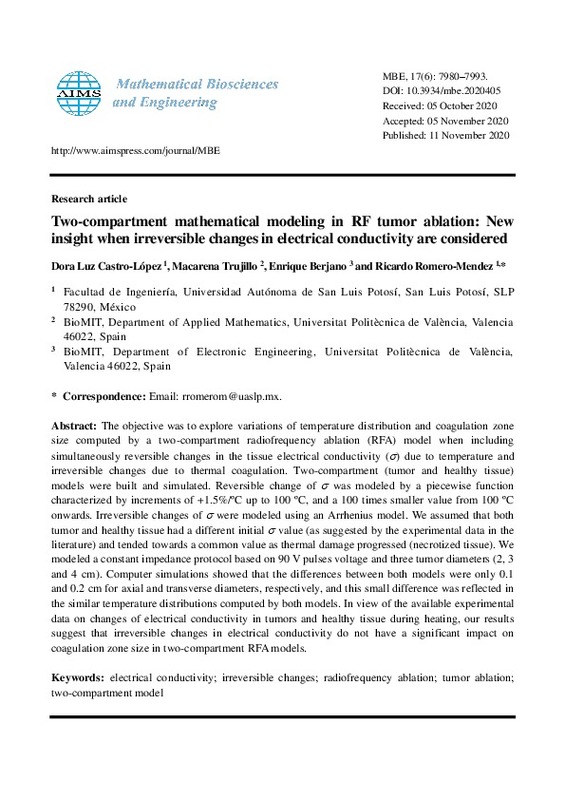JavaScript is disabled for your browser. Some features of this site may not work without it.
Buscar en RiuNet
Listar
Mi cuenta
Estadísticas
Ayuda RiuNet
Admin. UPV
Two-compartment mathematical modeling in RF tumor ablation: New insight when irreversible changes in electrical conductivity are considered
Mostrar el registro completo del ítem
Castro-López, DL.; Trujillo Guillen, M.; Berjano, E.; Romero-Mendez, R. (2020). Two-compartment mathematical modeling in RF tumor ablation: New insight when irreversible changes in electrical conductivity are considered. Mathematical Biosciences and Engineering. 17(6):7980-7993. https://doi.org/10.3934/mbe.2020405
Por favor, use este identificador para citar o enlazar este ítem: http://hdl.handle.net/10251/171424
Ficheros en el ítem
Metadatos del ítem
| Título: | Two-compartment mathematical modeling in RF tumor ablation: New insight when irreversible changes in electrical conductivity are considered | |
| Autor: | Castro-López, Dora Luz Romero-Mendez, Ricardo | |
| Entidad UPV: |
|
|
| Fecha difusión: |
|
|
| Resumen: |
[EN] The objective was to explore variations of temperature distribution and coagulation zone size computed by a two-compartment radiofrequency ablation (RFA) model when including simultaneously reversible changes in the ...[+]
|
|
| Palabras clave: |
|
|
| Derechos de uso: | Reconocimiento (by) | |
| Fuente: |
|
|
| DOI: |
|
|
| Versión del editor: | https://doi.org/10.3934/mbe.2020405 | |
| Código del Proyecto: |
|
|
| Agradecimientos: |
This work was supported by the National Council of Science and Technology (CONACYT, Mexico) through a scholarship grant to Dora Luz Castro-Lopez, CVU registration No 446604; and by the Spanish Ministerio de Ciencia, ...[+]
|
|
| Tipo: |
|









